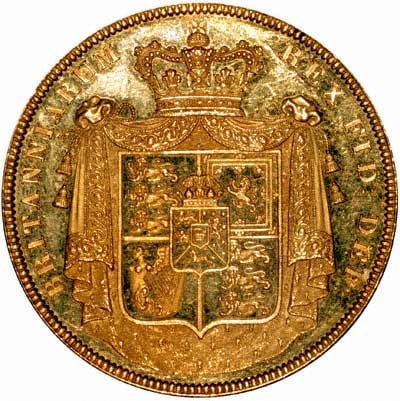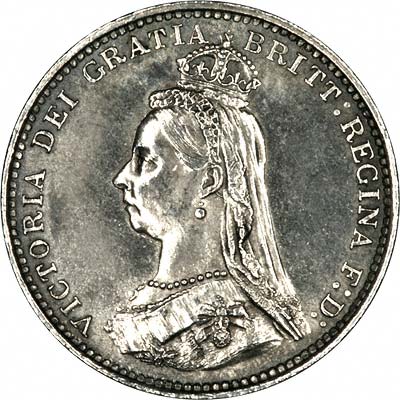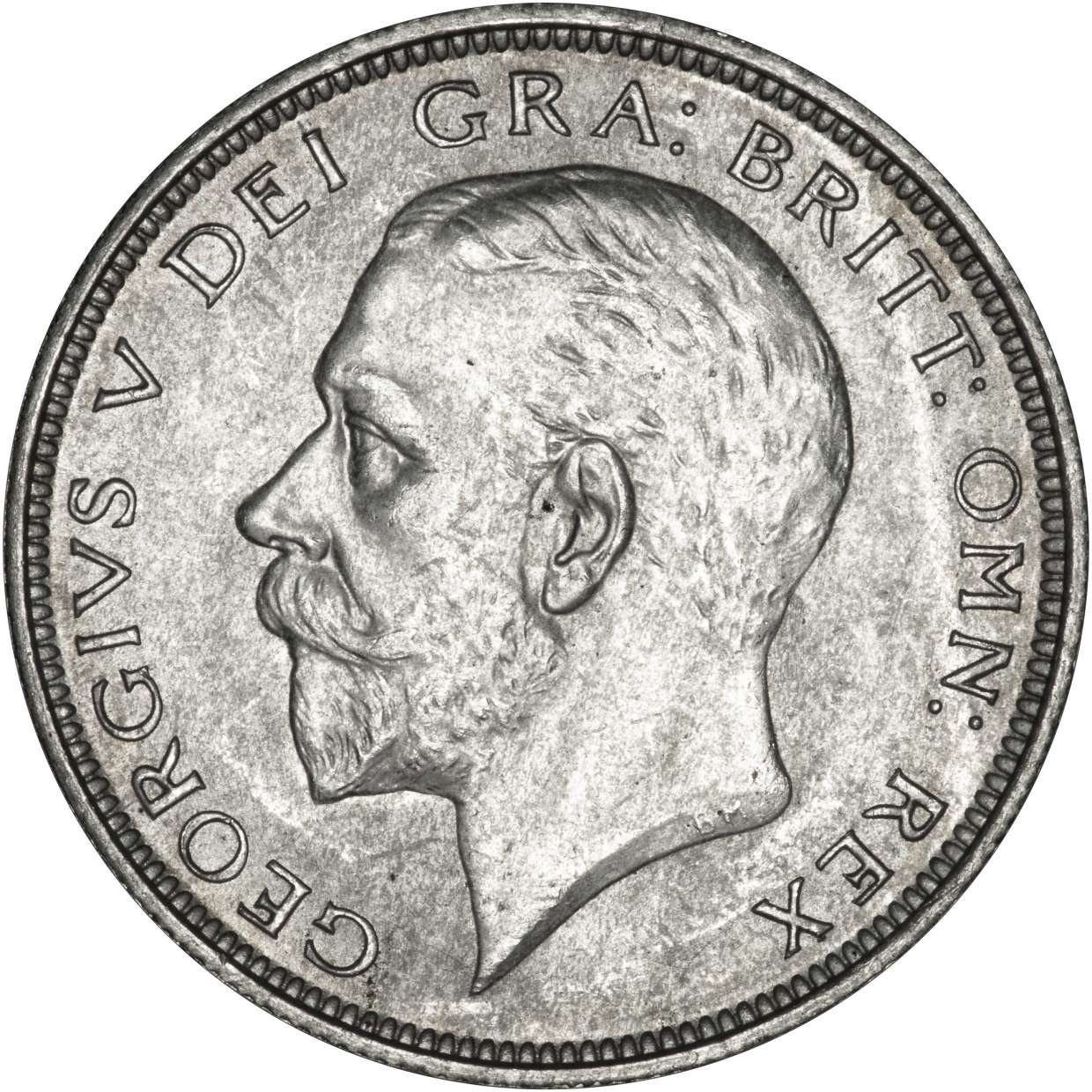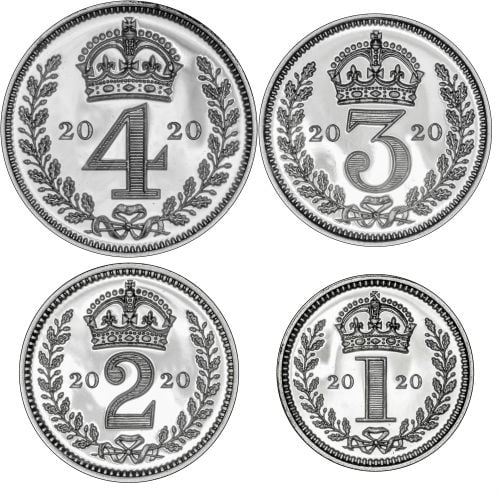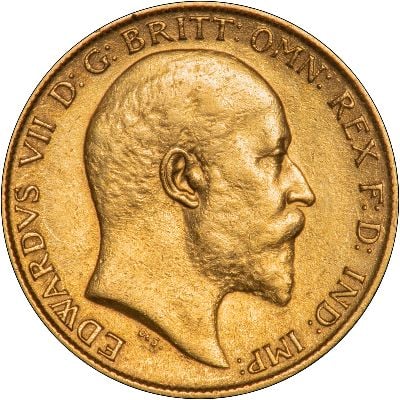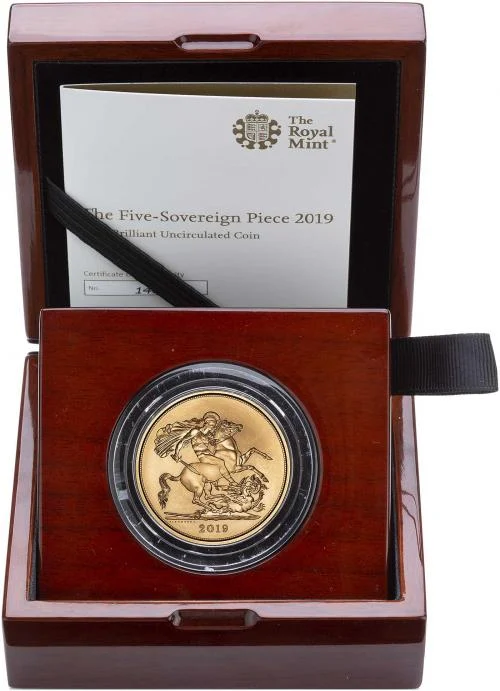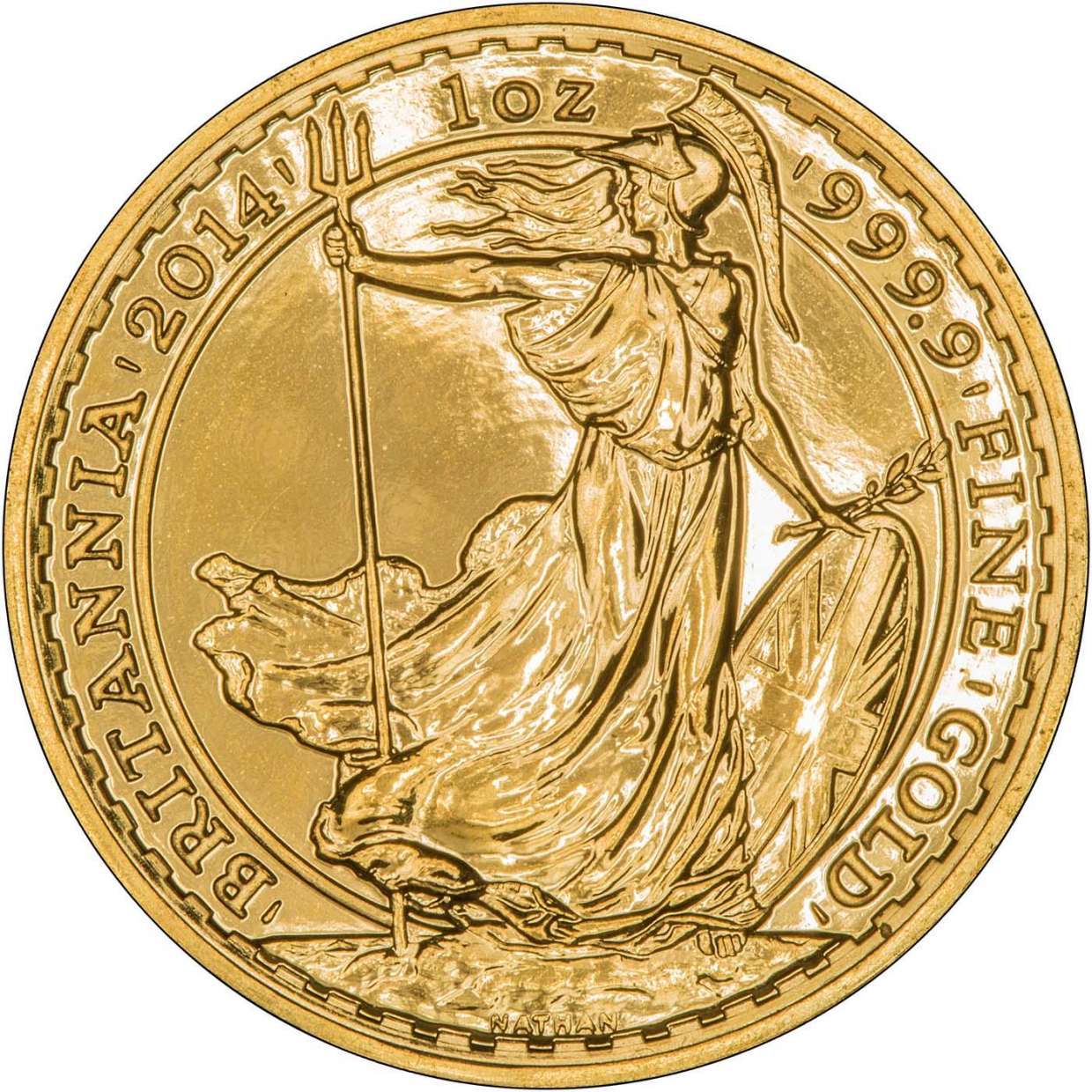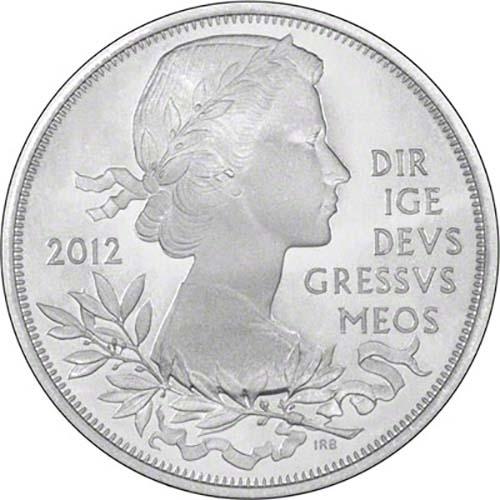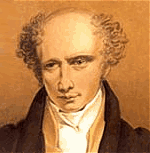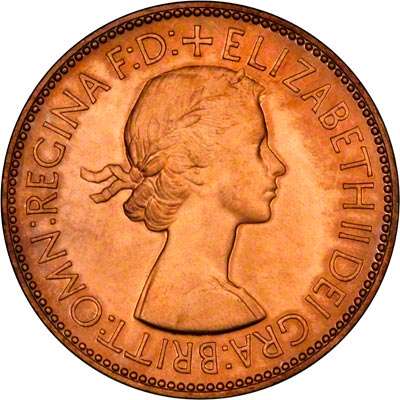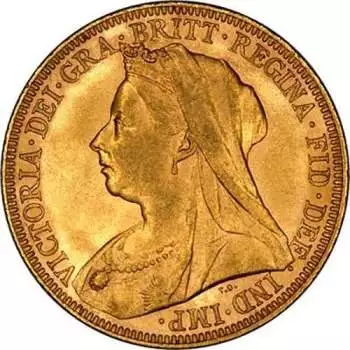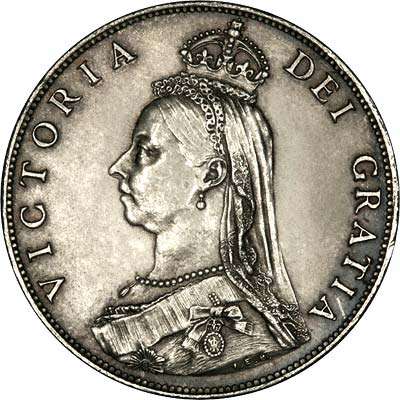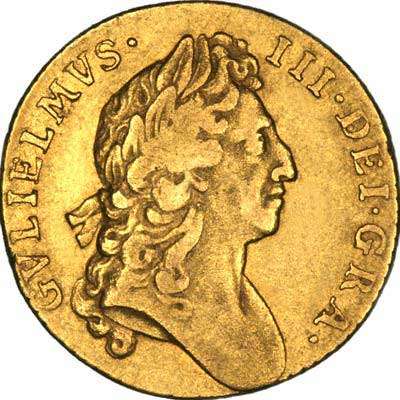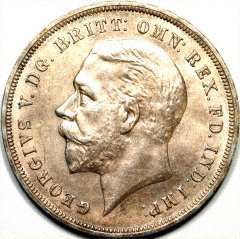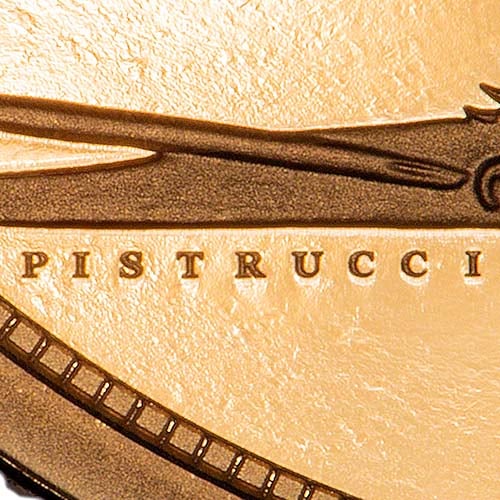A Brief History of Coinage in Britain
Synopsis
A brief history of coinage in Britain, from the Iron Age to the Present Day. We are numismatists and coin dealers based in Blackpool, England.
Ancient Britain
The first coins used in Britain were Gallo-Belgic staters imported from overseas as the result of trade between the celtic tribes in Britain and Gaul in the middle of the second century BC. Shortly thereafter, coins began to be produced domestically. At first, these were imitations of the overseas issues, but within a few decades began to be issued in the name or rather, particular style of the various tribes or rulers. During this period gold and silver issues were struck or cast, in addition to potin (a copper and tin alloy) presumably made from the tin mined by the Dumnonii tribe that ruled Cornwall at this time.
Following the conquest of Gaul by Julius Caesar in 51 BC, Celto-British coins began to be influenced by regular contact with the Romans. Coins with roman-style profile portraits and latin inscriptions (usually consisting of a tribal king or ruler's name) began to make an appearance, although the general 'celtic' abstract style of the coins was maintained.

In A.D. 43, contact with the Romans turned into outright conquest, and once the gradual subjugation of Britain was completed by the Romans, the issue of Celtic coinage came to an end. In its place came Roman coins, minted in the name of the Emperor. Although the Romans helped to spread the concept of coinage further throughout most of Britain when it had previously been largely confined to the South, the coins they used were imported from Rome or the provincial mints on the continent. For centuries, with the exception of issues struck by travelling mints on those rare occasions when the Emperor was present on British soil, the only 'coins' minted in Britain were contemporary counterfeits imitating Roman issues.

However, during the crisis of the third Century A.D. the usurper Carausius (A.D. 287-293) established mints in Clausentum (near Southampton) and London to strike coins in his own name and this marked the return of regular coin production in Britain for the first time in two hundred years. Following the reconquest of Britain by Constantius I (father of Constantine the Great) in 296, the Clausentum Mint was closed but the London Mint was kept open until 325, producing coins with a 'MLN', 'PLN' or 'PLON' mintmark to denote their origin.

The Dark Ages
Following the departure of the Romans in 410 A.D. there is evidence to suggest that the use of coins declined, and economic life started to return to a fairly primitive one based largely on barter and subsistence agriculture, both for the remaining Romano-British and the Germanic 'Anglo-Saxon' invaders. Coin production in Britain did not return for nearly 200 years, after some measure of stability had returned and trade with the outside world, particularly with the Franks, a need to use coins as a medium of exchange engendered itself once again. The first coins produced were thrymsas, gold imitations of old Roman bronze coins which had been used occasionally since the departure of the Romans. Other gold coins imitated those of contemporary Byzantine rulers or those of the Merovingian Franks. Shortly afterwards, small silver 'sceats' (meaning 'wealth') were struck for everyday transactions within the issuing ruler's domain. During the 8th Century, the Franks reformed their currency and introduced deniers struck on a broad, thin planchet. The importance of trade links with Charlemagne's Frankish Empire encouraged the Anglo-Saxon kingdoms to follow suit and copy the Frankish system of currency which consisted of 12 Deniers (Pennies) to the Sou (Shilling) and 240 Deniers or 20 Sous to the Libra (Pound). This is why England's pre-decimal system is also known as the '£sd' system. The name of the English currency, the Pound Sterling, dates from this time. It refered to the fact that 240 pennyweights (each consisting of 30 grains) weighed (in theory at least) 1 tower pound of sterling (0.925 fine) silver. At this point, pennies were the only coins struck. Shillings and Pounds remained mere units of account for many centuries.
Soon afterwards, the Viking Danes invaded England in search of land to settle, and they began to issue their own imitations of Anglo-Saxon issues before issuing their own coinage within the Danelaw (the Danish-ruled northern portion of England) towards the end of the 9th Century A.D.
In 973 A.D. Edgar became the first king of a United England when he was crowned at Bath. Every new coin in England was issued in his name at one of around seventy mints active in England that were open at this time. Each coin consisted of the King's portrait with the title 'Rex Anglor(um)' or 'King of the English' on the obverse, with the name of the moneyer and mint on the reverse in a legend surrounding a small cross. Most coins minted in England followed this basic design until long after the Norman Conquest of 1066.

The Middle Ages and the Renaissance
In order to discourage clipping, Henry III (1216-1272) introduced a new, 'Long Cross' design on his pennies from 1247 onwards, which made it harder to shave silver off the edges without it being noticable. In order to achieve this, he instituted a great recoinage and melted down huge quantaties of the old 'shortcross' designs on pennies dating back to Anglo-Saxon times so that they could be reminted according to the new standard. Under his son Edward I (1272-1307), several new denominations were introduced for the first time, including the groat (4d), farthing (quarter penny) and a more prolific issue of the half-penny (which had been issued only very occasionally in previous reigns). Edward I's grandson, Edward III, added the half-groat (2d or tuppence) to the denominations of silver coinage, but reduced the weight of the penny from 20 grains and then finally to 18, probably to pay for his attempt to seize the French throne during the Hundred Years War with France. In addition, Edward III introduced a gold coinage to supplement the standard silver issues, consisting of short-lived Leopard (3/-) along with its half and double, and the somewhat more successful Noble and its half and quarter fractions. Throughout the late medieval and early modern period, many different gold denominations were issued, including the ryal, angel, sovereign (first seen in 1489), crown (first issued in gold under Henry VIII) and unite. However, these gold issues should be seen as supplementary to the silver coinage, as their value fluctuated according to their gold value relative to silver (which was then the accepted standard of monetary value). Because of this, in addition to their extremely high value, they were generally used as a trade currency or as bullion rather than as a general circulation coinage.

The standard silver coinage remained more or less the same (with the exception of the reintroduction of the profile portraits and the 'testoon' pattern precursor to the shilling coin under Henry VII) until Henry VIII (1509-1547). Amongst his many other acts of villainy, Henry VIII, having squandered the vast treasury bequeathed to him by his father, cheated his subjects by gradually debasing the coinage of England. By the end of his reign, the coins of the realm were little more than copper coated in silver, which tended to rub off at the highest point (typically the nose on the king's portrait) earning him the nickname of 'Old Coppernose'. Another contemporary wit, the poet John Heywood, commented that the debased coins 'blushe(d) for shame'.*
His successor, Edward VI (1547-1553) tried with little success to re-instate the fineness of silver and restore the reputation of England's coinage (in addition to introducing the silver crown, half-crown and sixpence denominations), but it was his sisters and successors Mary (1553-1558) and Elizabeth (1558-1603) who restored the sterling standard, albeit with a reduction in the size of the coins.
Also under Elizabeth, the first milled issues were struck at the Royal Mint in London by a Frenchman by the name of Eloye Mestrelle. Although the coins produced were of a higher quality than hand-struck hammered issues, the horse-powered mill was not efficient enough to produce sufficient quantities to supply the demand for coins and this, combined with the machinations of the mintworkers who saw this new technique as a threat to livelihoods, led to Mestrelle's dismissal from the Mint in 1572.

When Elizabeth died in 1603, her first cousin once removed, James VI of Scotland inherited the throne of England and united the two kingdoms under one crown, although not one currency. Scotland's currency was based, like the English one, on the £sd system. Throughout the late Anglo-Saxon and early medieval period, the Scottish silver penny maintained parity with the English one until the late 14th century, when the Scottish penny was first reduced in size and later debased. The gap between the value of a Scottish penny and an English one gradually increased until the 1707 Act of Union, by which time it took 13 Scottish pennies (or 1/1d-Scots) to equal one English Penny. From then onwards, Scotland's coinage was displaced by British currency using the English standard.
Other than introducing the Gold Unite (20/-) in England and a similar gold coin called the Unit in Scotland to symbolise the newly united crowns of England and Scotland, the main coinage innovation of King James' reign was the introduction of base-metal farthings. Inflation and debasement had meant it was not longer practicable to strike small change in silver, but the demand for it still existed. It was seen as beneath the dignity of the crown to issue the coinage itself however, and the dirty business of actually issuing the coins was farmed out to Lord Harrington and others to mint under licence on the King's behalf, at a very substantial profit. Although these coins fulfilled a need for small change to a certain extent, they were not popular with merchants due the refusal of those issuing the tokens to redeem them in silver or gold. They were later suppressed by Parliament during the English Civil War.
*'The Splendid Shilling' by James O'Donald Mays p21 (available from some good bookshops).
The Early Modern Period
The events during the reign of King Charles I (1625-1649) led to one of the most prolific and varied coinages ever issued in Britain. Coins were struck at mints all around the country by the Royalists and the Parliamentarians (who despite taking up arms against the King, issued coins in his name from the Tower Mint amongst other places). Coins were often struck from silver and gold donated (and not quite so donated!) by citizens to finance the cause of one side or the other. Coins struck under 'field conditions' by moneyers who because of the war, had to set up temporary mints, were often quite crude in style, whilst the highly sought after 'siege' issues were often scarcely more than roughly cut shapes of silver with the value of the coin and the name of the besieged city stamped upon it. Coins continued to be issued in the name of Charles until his execution in 1649.
During the Commonwealth Period, coins were issued for the first and only time in English history with the legends entirely in English (Latin being viewed as a hangover of the nation's Roman Catholic past by England's new Puritan overlords). Issues denominated at sixpence and above had a shield displaying the English flag (instead of a regal portrait) on the obverse, surrounded by the legend 'The Commonwealth of England', whilst the reverse legend contained the faintly sinister slogan 'God With Us'. Oliver Cromwell also prepared a series of milled patterns displaying his own semi-regal portrait and the return of Latin legends, but he died in 1658 before the series entered full production. The Commonwealth pseudo-Republic struggled on for just over a year under Oliver's less capable son Richard, following which the late King Charles' son, Charles II, was restored to the throne in 1660
The first priority of Charles II with regards to the coinage was to issue a plentiful supply of hammered issues so that he could remove the humiliating and offensive 'Commonwealth' issues of his father's murderers from circulation as quickly as possible. After this had been done, the next priority was to convert the entire process of coin production over to milling, rather than hand-striking. This was implented in 1662. As has previously been mentioned, 'milled' coins were generally of much higher quality than their 'hammered' counterparts, and were much more resistant to clipping and counterfeiting. Although occasional milled issues had been struck on and off since the reign of Elizabeth I over 100 years earlier, it was only now that both the technology and the political will existed to make it possible to strike all the country's coins in this way from now on.
Meanwhile, the chronic lack of small change that had been allowed to develop since the suppression of Harrington's copper farthings had led merchants to issue their own crudely struck brass tokens, but again, their variable quality continued to cause problems for those making smaller transactions. The government of Charles II was keen to drive these tokens out of circulation and replace them with a new, official issue of base metal token coinage, and from 1672, a new series of copper (and also copper-plugged tin) half-pennies and farthings were struck to fill this need.
The coinage of Charles II's younger brother, James II, carried on more or less were his predecessor left off. However, the most notable aspect of James II's coinage took place after he was deposed by his daughter and son-in-law, William III and Mary II in 1689. Whilst trying to regain his throne via an invasion of Ireland, the erstwhile King struck ' silver' denominations, such as the crown, half-crown, shilling and sixpence in bronze. Known as 'gunmoney' (on account of the fact that much of the bronze was derived from melted down cannon), these issues were minted with the month of issue as well as the year, to facilitate their redemption in proper silver issues once James had managed to retake his throne. As James was defeated by King William at the Battle of the Boyne in 1690, and thus, never managed to regain the throne, many unfortunate Irish people were left out of pocket with the practically worthless coins they had been forced to accept at face value for goods and services rendered to James Stuart and his army.
During the reign of William and Mary, coins were issued in their name featuring conjoined busts of husband and wife together for the first time since the reign of the first Mary and her husband Phillip. When Mary II died of smallpox in 1694, William's portrait was featured alone until his own death in 1702. During this period, a great recoinage was implemented, with the intention of replacing all the worn and usually very badly clipped issues with good milled issues. The old hammered issues were recalled at face value for a short time before they were demonetised, with the difference in their face and intrinsic value made up for by a new window tax, which was implemented to finance the recoinage (and which wasn't repealed until the 1850s).
During the Reign of Queen Anne, the currencies of England and Scotland were finally unified. For a short time, the Edinburgh mint continued to issue coins with the letter 'E' under the bust, until it was finally closed in 1709. No half-pennies were issued during her reign, and the only farthing issue was a pattern struck in her last year, 1714. Also notable are the 'Vigo' issues, struck in the year 1703 featuring the word 'Vigo' under the bust, which made from bullion captured by the Royal Navy from the Spanish and French at the Battle of Vigo Bay.
Following the death of Queen Anne, her nearest protestant relative, George I, Elector of Hanover, was chosen as King, reigning until 1727. Numismatically, his reign was notable for the 'dump' issue farthings and half-pennies (which were smaller but thicker than previous issues), Sir Isaac Newton's tenure as Master of the Royal Mint (during which he informally placed Britain on the gold standard in 1717, fixing the value of the Guinea at 21/-) and for the 1723 South Sea Company silver issues, (minted from silver provided by the South Sea Company, responsible for the disastrous 'South Sea Bubble' incident three years prior). The reign of George II (1727-1760) saw another interesting issue of coins, the 'Lima' issues of 1745/46, which were struck from gold and silver captured from the Spanish by Commodore Anson and his squadron of ships operating in the Pacific during the War of Jenkin's Ear.

Crisis and Reform
The reign of George III saw a major crisis in the state of Britain's currency. Relatively few issues of silver or copper were struck and a high-proportion of those circulating were poor quality counterfeits (counterfeiting had always been a problem down the ages, and still is, but it was particularly rampant in this period). The last copper issues were struck in 1775, and the last silver coin was struck in 1787. The rising price of metal and the decrepit state of the Royal Mint, which used machinery and technology that had changed little since 1662, meant that the mint was no longer capable of striking large numbers of coins to the required standard to meet demand. The only coins which were struck consistently and regularly in the early part of George III's reign were gold issues, required for foreign trade and by the better-off (such as those who served in the higher levels of government) for higher level transactions.

The Government made some attempt to alleviate the shortage of silver by countermarking Spanish dollars and circulating them at 4/9d, but for smaller change, merchants, tradesmen and local public institutions (such as workhouses) were compelled to take matters into their own hands by issuing their own copper tokens. Known as 'Conder' tokens (after James Conder, an Ipswich Drapery owner who collected and catalogued tokens as well as issuing his own), these tokens were used as a form of advertisement or self-promotion for those individuals and institutions issuing them and, being manufactured using the latest technology of the industrial revolution, were usually struck to a much higher standard than official legal tender issues! Unfortunately, a lack of proper coinage remained a problem, partly due to the fact that the token issues were generally not accepted outside the area were those issuing them were based.
Eventually, The Government turned its attention more seriously towards the dearth of copper change by contracting Matthew Boulton (a token manufacturer based in Birmingham) to strike copper penny and two penny pieces at the Soho Mint. Known as 'cartwheels', these large-sized coins had a copper content close in intrinsic worth to their face value as a deterent to forgery*, but their large size and rising copper prices ensured that they were of limited success as currency. Smaller half-penny and farthing issues were also struck by Matthew Boulton in 1799, 1806 and 1807 and were enough to supply demand for copper coinage until 1821. Matthew Boulton was also contracted, from 1804 onwards, to strike silver Bank Tokens at the behest of the Bank of England, they were refered to as tokens, rather than coins, in order to get around the legal issues of violating the Royal Mint's jealously guarded sole prerogative to strike precious metal coin of the realm.
In 1816 following the conclusion of the Napoleonic Wars, a major coinage reform act was passed. The silver issues were slightly reduced in size and weight and large quantities were struck to replace and supersede what little silver remained in circulation, and the following year, the 20/- or £1 sovereign (the coin for which Chards is perhaps best known for) was introduced, replacing the Guinea (which was used henceforth as an informal unit of account for high-value goods until 1971, and is still used to this day for some livestock auctions).
Regular copper issues were resumed in 1821 under George IV (1820-1830) and were produced to the same dimensions until the reign of Queen Victoria (1837-1901), when in 1860s, they were replaced by bronze coins (many of which were struck at Soho's successor, the Heaton Mint in Birmingham until the 1880s) whose dimensions lasted until decimalisation in 1971. Also during the range of George IV, the Irish Punt (Pound) was abolished in 1826 and replaced with the British Pound Sterling until 1928. See our page on Irish Coins for more details on Ireland's seperate pre-1826 currency.
During the reign of Queen Victoria, many millions of coins were churned out of almost every conceivable denomination to fuel the explosion in economic growth as Britain ascended to the peak of its industrial and maritime might. A tentative step towards decimalisation was made in 1848 with the introduction of the Florin (two shillings or one tenth of a pound). A double Florin was later introduced in 1887, but discontinued in 1890 because it was frequently confused with the crown and half-crown. Meanwhile, Royal Mint branches were opened in Sydney, Melbourne and Perth to help the Royal Mint in London strike enough sovereigns to cope with the demand for gold coins to help finance the necessary expenses for running a huge global Empire. More branches were later opened in Canada (1908) and South Africa (1926), and Bombay (1918). In the case of the latter, a sovereign was struck for a single year, 1918.

The First World War (1914-18) forced Britain to export much of its gold and silver reserves to the US as repayment for war loans, and Britain reduced the fineness of its silver coinage from the 0.925 sterling standard to 0.500 or 50% in 1920. Having come off the gold standard during the first world war, Britain attempted to return to it in 1925. Unfortunately, the pound had been inflated too far and the country was far too indebted to make a return to a standard of value at 0.2354 of an ounce of gold realistically practicable, and Britain came off the gold standard again in 1931, at which time the sovereign ceased to circulate as a pound coin and became a purely bullion coin (although all Sovereigns minted since 1837*** remain Legal Tender for £1.00).
Pattern coins were created for Edward VIII (1936), but his abdication less than 12 months later meant that no coins were issued in Britain in his name. During George VI's reign (1936-1952) the brass threepence was introduced, eventually supplanting the silver threepence in the 1940s.
As a result of the economic strain of fighting yet another major war, Britain was forced to undergo one last final debasement of its circulating coinage, when silver was replaced entirely by cupro-nickel in 1947. During the reign of our present Queen, a numismatic era that had lasted for over 1,000 years came to an end in 1971, when on the 15th of February, Britain converted to a decimalised currency, with 100 new pence (p) equalling £1. The old shillings and florins continued to circulate as 5p and 10p pieces until 1990 and 1992 respectively, when the 5p and 10p coins were reduced in size and the old sized ones demonetised. Since decimalisation, many new denominations have sprung up, including the new brass £1 coin of 1983, the bi-metallic £2 of 1998 and the heptagon-shaped 20p piece of 1982 (complementing the shape of the 50p piece, which was first introduced in 1969 as the 'ten bob bit', later reduced in size in 1997) additionally, the Crown (5/- or 25p) was 'revalued' at £5 for new issues by the Royal Mint in 1990.

**This coin was struck in Cappadocia (modern day Turkey) and probably did not circulate in Britain.
***The 1889 Coinage Act required that all gold coins minted 'before the reign of our present Queen' (Victoria) should be credited at their face value and removed from circulation. Under the auspices of the Act, an 1890 Proclaimation declared that all lightweight pre-1838 coins submitted after February 28 1891 would no longer be legal tender currency, and would only be credited according to weight, which would be less than their nominal face value of 20/- if they were judged underweight. The non-legal tender status of pre-1838 gold coins was re-affirmed by the 1971 Coinage Act.
The Future
The future of Britain's coinage is difficult to predict, but change is a certainty. Even if we do not enter the Euro along with most of our other European neighbours, our coinage and its denominations will have to change to reflect the constant inflation which all world currencies have been subjected to since the rejection of the gold standard in the 20th century. Within the next few years, it is likely that the 1p and 2p denominations will disappear from circulation as the cost of their production exceeds that of their face value, and the higher denominations must eventually follow them. However, as old denominations enter the realm of numismatic history, new ones will rise to take their place, and coin collectors will always have a new series to collect, for as long as coins continue to be issued as an exchange medium.
You may wish to visit our portrait gallery of English/British monarchs on our page Historical Notes on England's Kings and Queens. Although it is not complete, we add new and better coins when we can. We are always keen to buy superior quality British coins to upgrade our photo gallery.
Related Blog Articles
This guide and its content is copyright of Chard (1964) Ltd - © Chard (1964) Ltd 2024. All rights reserved. Any redistribution or reproduction of part or all of the contents in any form is prohibited.
We are not financial advisers and we would always recommend that you consult with one prior to making any investment decision.
You can read more about copyright or our advice disclaimer on these links.



